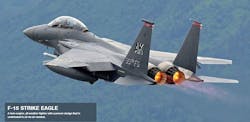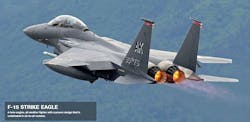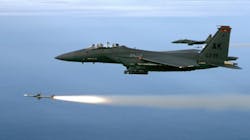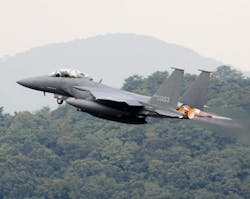F-15 military fighter jet
The F-15E Strike Eagle is a twin-engine, all weather fighter that is the backbone for the Air Force’s air superiority. Its proven design is undefeated in air-to-air combat, with more than 100 aerial combat victories. Its two engines provide 58,000 pounds of thrust, which enable the F-15 to exceed speeds of Mach 2.5. Boeing has built more than 1,600 of the aircraft for six countries around the world. None of them plan to retire the F-15.
The F-15 Eagle is an American twin-engine, all-weather tacticalfighter jet originally designed and developed by McDonnell Douglas to gain and maintain air supremacy in aerial combat. It is considered to be among the most successful modern military fighter aircraft, logging more than 100 victories and no losses in aerial combat.
The United States Air Force officials selected McDonnell Douglas' design, among all submitted proposals, in 1967 to meet the military’s need for a dedicated air superiority fighter. The Eagle first flew in July 1972, and entered service in 1976.
The Eagle has since been exported to Israel, Japan, and Saudi Arabia, among other nations. The F-15 was originally envisioned as a pure air superiority aircraft. The flexible design enabled the development of an all-weather strike derivative, the F-15E Strike Eagle, which was later developed and entered service in 1989. The F-15 Eagle is expected to be in service with the U.S. Air Force through 2025 and beyond. The F-15 production line is set to end in 2019, 47 years after the military fighter jet’s first flight.
F-15 Technical Specifications
Length | 63.8 ft (19.45 m) |
Height | 18.5 ft (5.65 m) |
Wing Span | 42.8 ft (13.05 m) |
Propulsion | Two P&W F100 or two GE F110 turbofan engines in 29,000 lb (13,154 kg) thrust class with afterburning |
Weight | 45,000 lb (20, 411 kg) class |
Speed | 1,875 mph (3,017 kph) |
Armament | F-15A/B/C/D air-to-air: |



